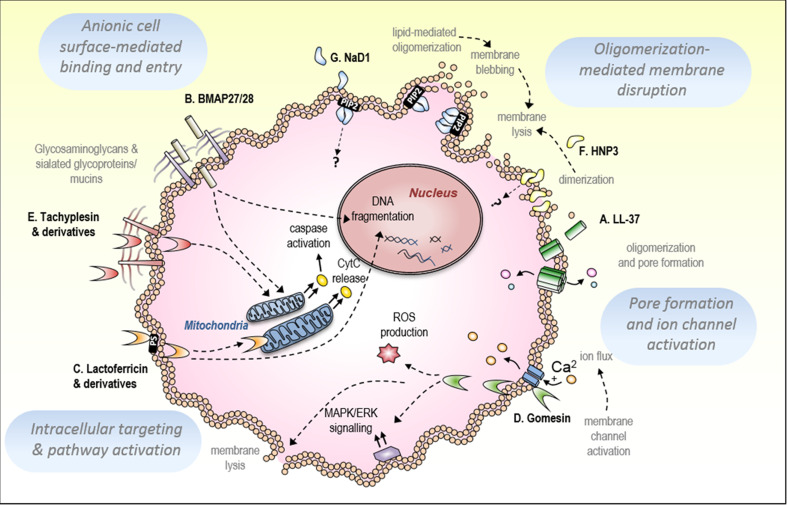Fig. 3.
Mechanisms of CAP-mediated tumor cell killing. a The human cathelicidin, LL-37, induces membrane permeabilization of tumor cells possibly via forming oligomeric membrane pores of up to seven peptides. b Bovine cathelicidins BMAP 27/28 activate apoptotic pathways in tumor cells, demonstrated via DNA fragmentation and cytochrome c release, possibly dependent on an interaction with cell-surface mucins. c The bovine β-haripin peptide, lactoferricin B (LfcinB) induces mitochondrial membrane permeabilization, cytochrome c release and DNA fragmentation, with phosphatidylserine-mediated plasma membrane permeabilization demonstrated for the synthetic derivative of human lactoferricin, R-DIM-P-LF11-322. d The β-hairpin tarantula peptide, gomesin, induces necrotic cell death via l-type calcium channel activation, ROS production and activation of the MAPK/ERK signalling pathway. e The apoptosis-inducing activity of the horseshoe crab peptide, tachyplesin, has been suggested to involve an interaction with glycosaminoglycans at the tumor cell membrane. f Human neutrophil peptide 3 (HNP-3) dimerizes and may form higher oligomers to destabilize target membranes. g The plant defensin, NaD1, oligomerizes at the inner membrane of tumor cells with PIP2, inducing membrane blebbing and lysis

